In Keras, what are the layers(functions) corresponding to tf.nn.conv2d_transpose in Tensorflow? I once saw the comment that we can Just use combinations of UpSampling2D and Convolution2D as appropriate. Is that right?
In the following two examples, they all use this kind of combination.
1) In Building Autoencoders in Keras, author builds decoder as follows.
2) In an u-uet implementation, author builds deconvolution as follows
up6 = merge([UpSampling2D(size=(2, 2))(conv5), conv4], mode='concat', concat_axis=1)
conv6 = Convolution2D(256, 3, 3, activation='relu', border_mode='same')(up6)
conv6 = Convolution2D(256, 3, 3, activation='relu', border_mode='same')(conv6)
